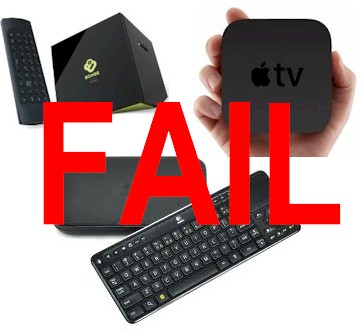I was over at my neighbor’s yesterday evening and the talk turned to what the hot gadget was for Christmas this year. After talking a bit about tablets and 3D TV, the discussion turned to Internet TV and cable cutting.
My neighbor, who is definitely a gadget hound, said he’d read about the various products that claim to be a great way to watch Internet TV. But he had concluded that really, the best way to access video content on the Internet was to use a computer. And I couldn’t agree with him more.
This year has seen the cable cutting movement gain significant momentum, although conflicting statistics from both sides make it difficult to judge the real size of the ground swell. But there is more content than ever out there in the Cloud and likely to be even more in the coming year. And when even the middle-aged crowd that I know is reasonably conversant on a tech subject, then it’s pretty much moved in from the fringe.

Although I said that D-Link’s Boxee Box, which went back to Amazon yesterday, was the last Internet TV streamer box to drop this year, there was, in fact, one more. While I was away visiting family for Thanksgiving last week, Apple finally managed to grind out iOS 4.2.
The main reason I bought the "hockey puck" Apple TV was to allow Ms. SNB to use AirPlay to get HuluPlus from our (hers, really) iPad onto her TV. So I have been patiently awaiting 4.2’s arrival, which has been way too long coming.
So imagine my, uh, annoyance, when I found that yet another company had promised long and delivered short. Yeah, AirPlay streams audio just fine. But it doesn’t work in HuluPlus. And when I clicked on the AirPlay icon that appeared in the Netflix app (yes, I know that Apple TV has Netflix on it), only the audio was transferred to my TV.
Some folks say this is DRM at work. But the explanation that I think makes more sense it that only video formats that the Apple TV puck supports can be AirPlayed. Otherwise, either the iPad/Phone/Touch or Apple TV would have to transcode on the fly, which probably ain’t gonna happen.
Since I don’t buy TV programs from iTunes, which will AirPlay, that makes the iPad / Apple TV puck combo pretty much dead in the water as even a partial Internet TV solution. Chalk it up to another case of letting Marketing folks get too far ahead of reality.
So, let’s recap the state of cable cutting boxes:
Google TV – All hat, no cattle. Or more accurately, a nice idea if it content access wasn’t being blocked by every content owner under the sun. Google may do no evil, but the networks aren’t going to trust what happens when they let Google anywhere near their advertisers.
Boxee – D-Link was brave (greedy? foolish?) to jump in first to try to help tiny Boxee go mainstream. But the product is late, missing key apps that it hyped having (Netflix, Vudu, Hulu) and lives at the peril of having content providers turn off their taps at any time. Maybe David won against Goliath. But VC money isn’t going to wait forever for Boxee to get a revenue stream going.
Apple TV – Maybe Steve and Co. have a plan. But at this point, the crystal ball is hazy. Given Apple’s track record with iTunes and music, they might be able to convince content owners to play ball. But then again, given their iTunes track record, maybe they won’t. AirPlay might make ATV2 a nice way to get presentations and some content up on a big screen. But it isn’t as simple as what-you-see-on-the-iWhatever-is-on-your-TV. So forget ATV2 as an Internet TV device
Roku – With both Netflix and HuluPlus, a smattering of other Internet video content and an entry price of only $60, Roku’s little players are a Mom and Pop friendly and reasonably-priced way to watch some Internet TV (and movies). Where they fail is in letting you play content sitting on your NAS and computers, a victim, like the ATV2, or limited video format support. If you’re looking to get into the Internet TV game for cheap, though, and don’t mind limited content, this is the only product that I’d recommend.
Which brings me back to my wiser-than-he-realizes neighbor. In the twisted logic of content owners, watching their stuff on a computer is good, while watching on a dedicated box is bad. Even if that dedicated box presents their web page intact, ads and all. Never mind that pretty much all current computers come with a video out port and many even have HDMI, so can be easily attached to a large flatscreen for easy "lean-back" enjoyment. If you’re running Windows or Mac OS and using any browser that supports Flash (or maybe HTML5 for the really hip guys), then you can watch whatever you want on any site.
So if you’re thinking of cutting the cord anytime soon and want to buy the most hassle free way to do it this holiday season, do yourself (and maybe the economy) a favor. Look for bargains on nettops, notebooks and netbooks that have at least a dual-core Atom processor and HDMI port. Pick up a long HDMI cable while you’re at it and then lean back and enjoy the easiest way to get Internet TV that you’re going to find for perhaps a long, long while.
Why? Peter Kafka’a MediaMemo piece cuts right to the chase.
